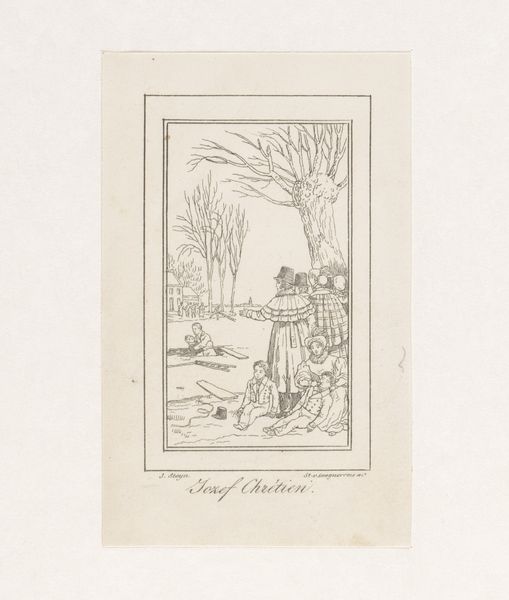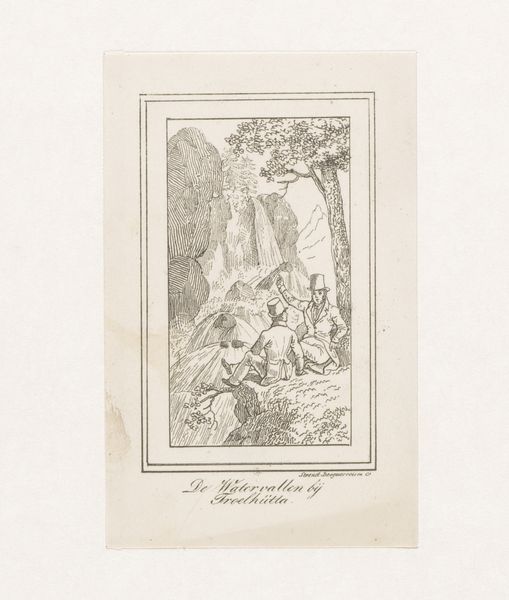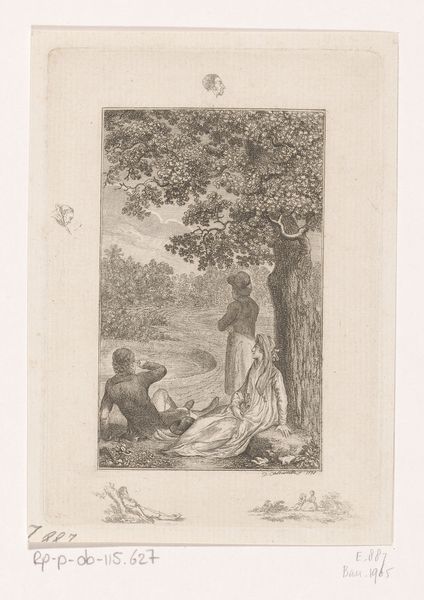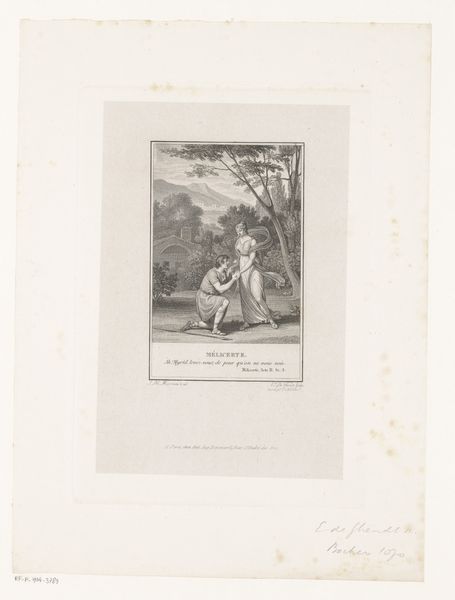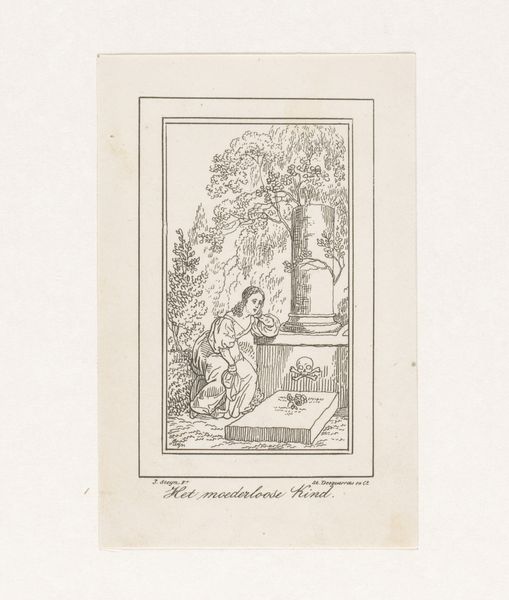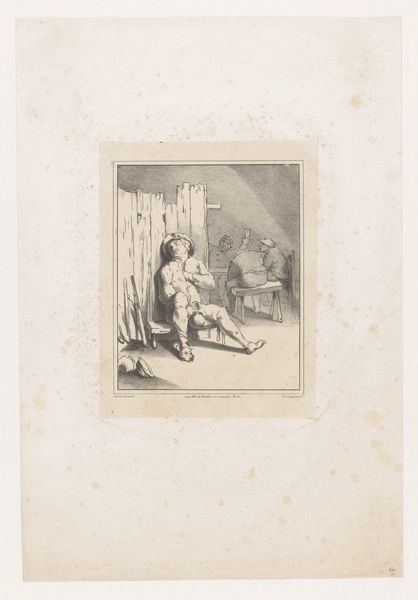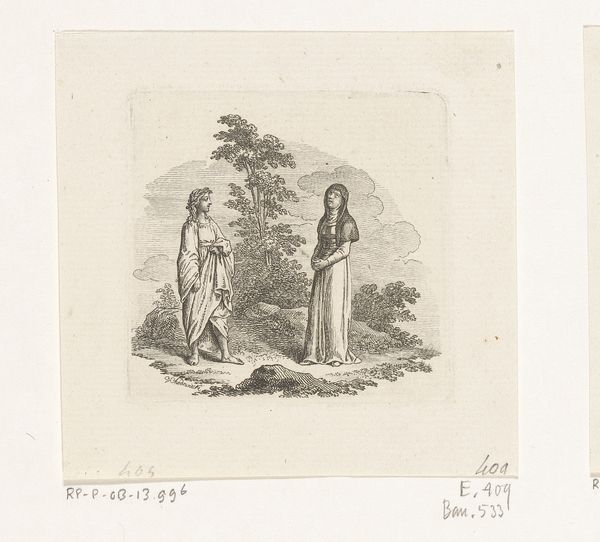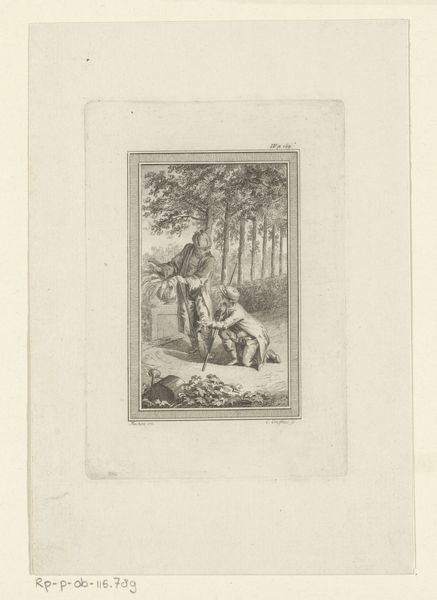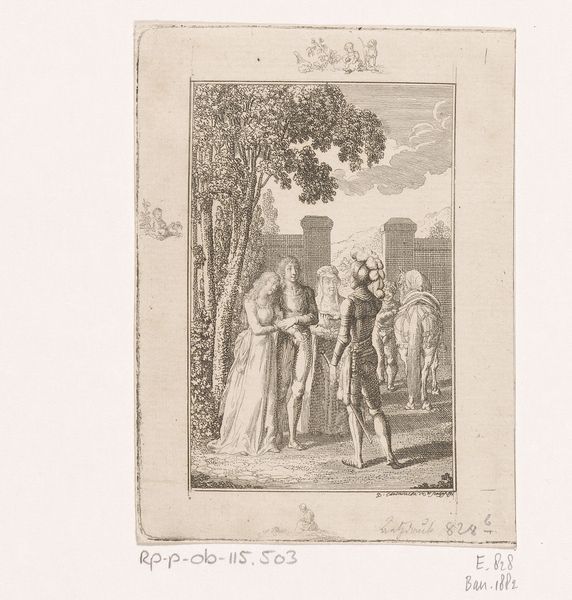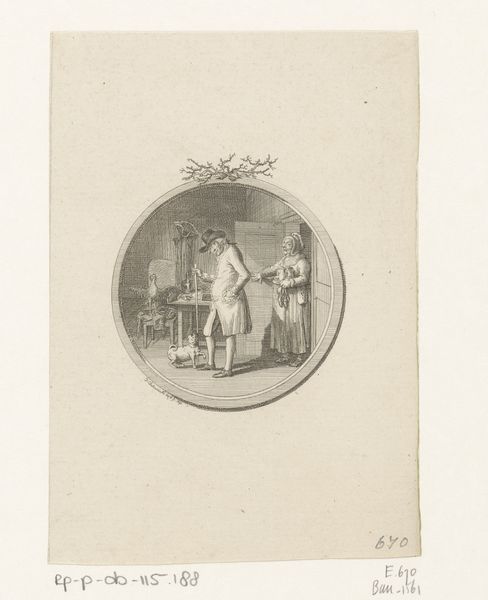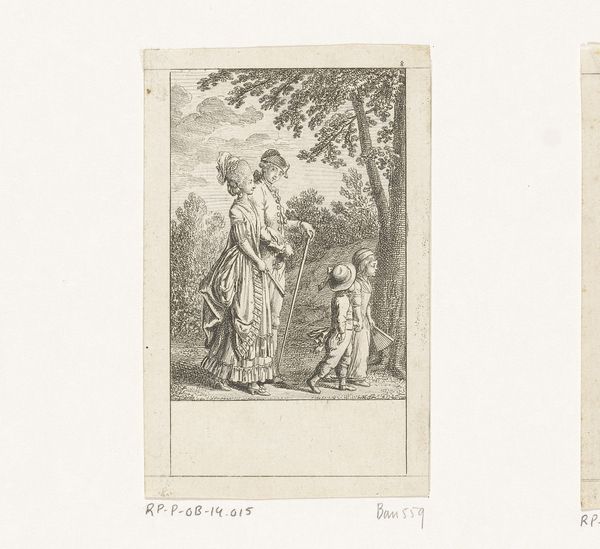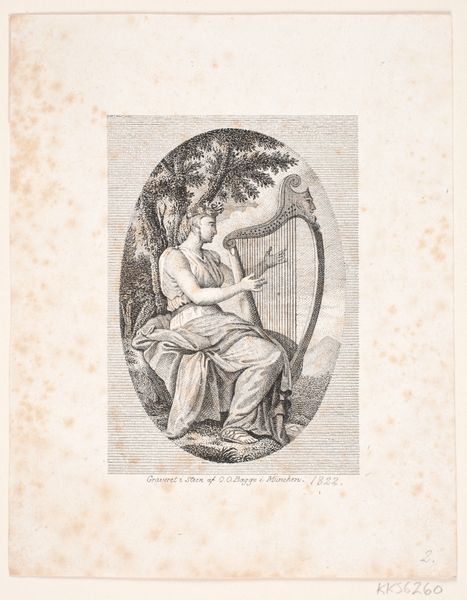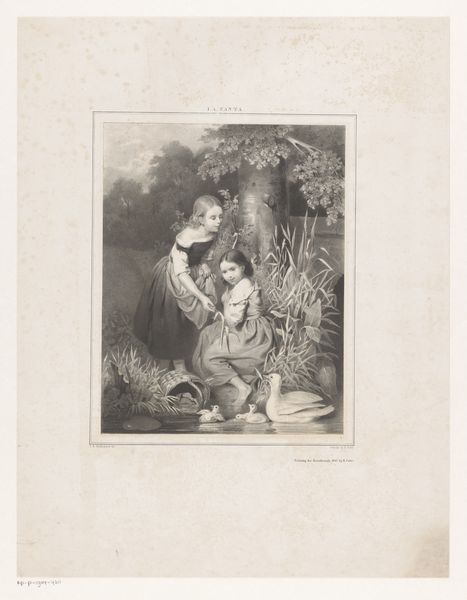
drawing, print, ink, engraving
#
drawing
#
narrative-art
# print
#
landscape
#
ink
#
genre-painting
#
engraving
Dimensions: height 119 mm, width 73 mm
Copyright: Rijks Museum: Open Domain
Curator: Johannes Steyn's print, “Man en jongen bij blinde man,” completed in 1836, is an intriguing piece in the Rijksmuseum's collection. Editor: My immediate impression is one of stark contrast. The clean lines of the engraving emphasize a division, both visual and thematic, between the affluent and the destitute. The use of hatching and cross-hatching creates texture, yes, but it also heightens the somber mood. Curator: Indeed. The image resonates with prevalent cultural narratives surrounding charity and societal disparities of the era. A well-dressed man and a boy offer alms to a seated, blind beggar, and this familiar subject speaks volumes. This harkens back to enduring representations of social responsibility, or lack thereof, playing on familiar symbolic tropes. Editor: Structurally, notice how Steyn uses the bordering frame to tightly constrain the narrative space, thereby accentuating the close quarters shared by these characters. This limitation echoes the social restrictions each faces. The strong verticals of the architecture further box the scene. Curator: Consider also the significance of blindness as a recurring symbol throughout history. Blindness represents ignorance, dependence, and vulnerability but it may symbolize also an alternative vision, one attuned to truths unseen by those with sight. The engraving invites the viewer to reflect on their own sightedness, to consider their understanding and compassion towards those perceived as "less fortunate". Editor: Precisely. Steyn crafts an internal triangle using the gazes and gestures of these three figures; this generates a visual tension which is amplified through contrasting light and shadow. It creates depth, literally and conceptually. Curator: We find familiar morality tales of the 19th century, rendered through accessible and readily understood visual language. It captures social tension and reflects anxieties about poverty and dependence, that continues even now. Editor: In the end, the print masterfully communicates not simply a scene, but a dynamic, a silent narrative pregnant with implied meaning and cultural resonance; Steyn invites a conversation—a discussion prompted by a precise and formalized set of aesthetic choices.
Comments
No comments
Be the first to comment and join the conversation on the ultimate creative platform.
